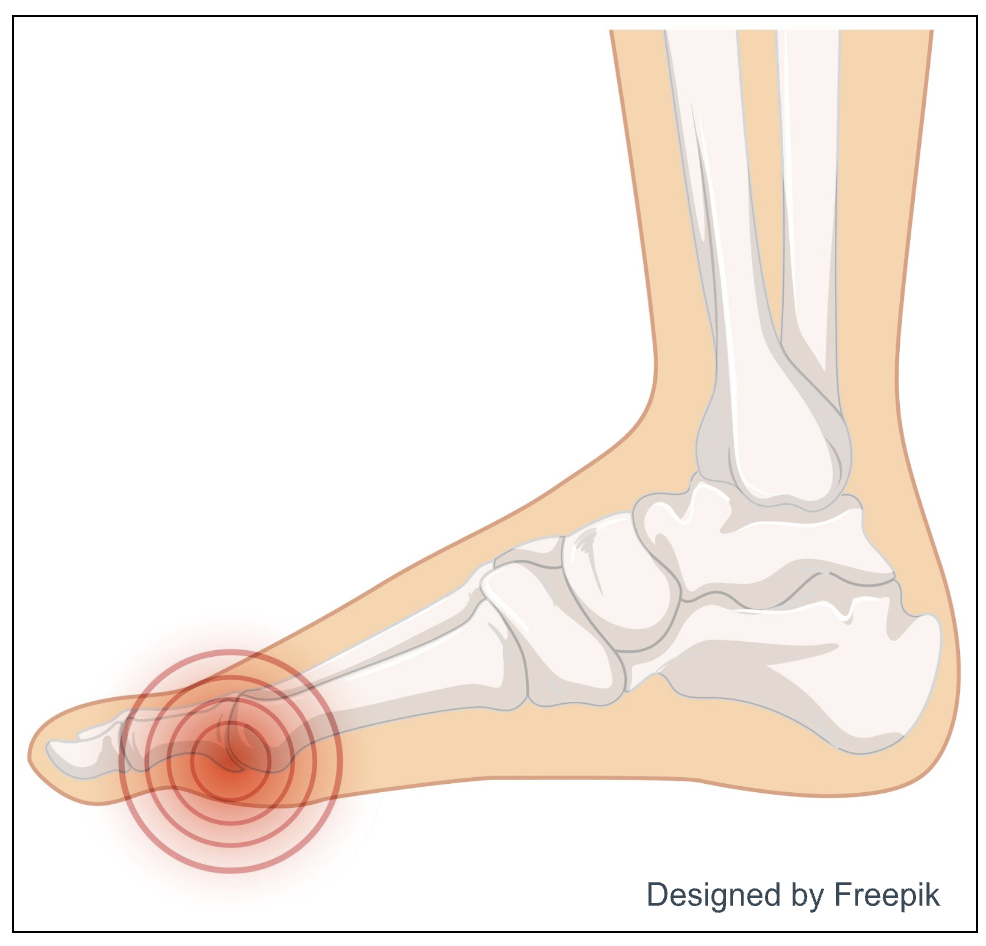Arthritis is a common condition that affects millions of people, and it doesn’t just target the hands, knees, or hips—your feet can be particularly vulnerable to arthritis as well. The feet are made up of 33 joints, and when arthritis develops, it can lead to pain, stiffness, and swelling, making it difficult to walk and maintain an active lifestyle. At Podiatry of Greater Cleveland, we specialize in helping patients manage arthritis in their feet to reduce pain and improve mobility.
In this blog, we’ll explore the different types of foot arthritis, symptoms to look for, and effective management strategies to help keep you moving.
What Is Foot Arthritis?
Foot arthritis occurs when the cartilage between the joints breaks down, causing the bones to rub against each other. This results in inflammation, pain, and reduced joint mobility. Arthritis in the feet can affect different parts of the foot, from the toes to the ankle.
Types of Arthritis Affecting the Feet
Several types of arthritis can impact your feet, but the most common include:
- Osteoarthritis: Often referred to as “wear and tear” arthritis, osteoarthritis occurs when the cartilage that cushions the joints gradually deteriorates over time. This form of arthritis frequently affects the big toe joint, known as the first metatarsophalangeal joint. Learn more about osteoarthritis here.
- Rheumatoid Arthritis: This is an autoimmune disease where the body’s immune system attacks the joints, leading to inflammation. Rheumatoid arthritis often affects both feet symmetrically and can cause severe deformities if not managed properly. More information on rheumatoid arthritis.
- Post-Traumatic Arthritis: This type of arthritis develops after an injury to the foot, such as a fracture or severe sprain. The trauma can damage the cartilage, leading to arthritis over time. Read about post-traumatic arthritis here.
- Gout: Gout is a form of inflammatory arthritis caused by an excess of uric acid in the blood, which forms crystals in the joints, often starting with the big toe. Find out more about gout here.
Symptoms of Foot Arthritis
Symptoms of foot arthritis can vary depending on the type and severity of the condition. Common signs include:
- Pain and Tenderness: Aching or sharp pain in the joints, particularly after activity or prolonged standing.
- Stiffness: Difficulty moving the joints, especially in the morning or after periods of inactivity.
- Swelling: Inflammation around the affected joints.
- Deformities: Over time, the joints may become misaligned, leading to bunions, hammertoes, or other deformities.
- Reduced Mobility: Arthritis can make it difficult to walk, stand, or perform other activities.
If you are experiencing any of these symptoms, it’s important to seek treatment early to prevent further damage and preserve your mobility.
Managing Foot Arthritis
While arthritis is a chronic condition, there are several strategies that can help manage the pain and stiffness associated with foot arthritis. Here are some of the most effective treatments:
1. Custom Orthotics
Orthotics are custom-made shoe inserts that help support the feet, redistribute pressure, and alleviate pain in arthritic joints. They can also improve alignment and reduce strain on the affected areas. Learn about the benefits of custom orthotics.
2. Footwear Modifications
Wearing supportive shoes with a wide toe box and cushioning can make a significant difference in managing arthritis pain. Avoid shoes with high heels or narrow toes, which can exacerbate pain and deformities.
3. Physical Therapy
Exercises and stretches designed to improve flexibility, strength, and balance can help manage arthritis symptoms. A physical therapist can create a tailored exercise program to keep your joints mobile and reduce stiffness.
4. Medications
Non-steroidal anti-inflammatory drugs (NSAIDs) can help reduce pain and inflammation. In more severe cases, corticosteroid injections may be recommended to manage pain. For rheumatoid arthritis, disease-modifying antirheumatic drugs (DMARDs) are commonly used.
5. Surgical Options
When conservative treatments fail to provide relief, surgical options such as joint fusion or joint replacement may be considered. A podiatric surgeon can evaluate your condition and recommend the best course of action.
Tips for Living with Foot Arthritis
Here are some lifestyle tips that can help you manage foot arthritis and maintain a good quality of life:
- Stay Active: Gentle activities like walking, swimming, or yoga can help keep your joints flexible and reduce stiffness.
- Manage Your Weight: Maintaining a healthy weight can reduce the strain on your feet and joints.
- Take Breaks: If you have to stand or walk for long periods, take regular breaks to rest your feet.
- Apply Heat or Cold Therapy: Heat can help relax stiff joints, while cold can reduce swelling and pain.
Why See a Podiatrist for Foot Arthritis?
At Podiatry of Greater Cleveland, our podiatrists are experienced in diagnosing and treating all forms of foot arthritis. We provide comprehensive care, from conservative treatments like orthotics and physical therapy to advanced surgical options when necessary. Regular check-ups with a podiatrist can help monitor your condition and adjust your treatment plan as needed to ensure the best outcomes.
Take the First Step Toward Relief
If you’re struggling with joint pain or stiffness in your feet, don’t wait to seek help. Contact Podiatry of Greater Cleveland today to schedule an appointment. We’ll work with you to develop a personalized treatment plan that helps you manage your arthritis and keep you moving comfortably.
Call us to schedule your appointment at (440) 884-4100 for our Parma location or (440) 660-2990 for our Broadview Heights office, or request an appointment online today!

